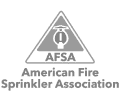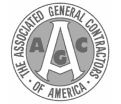How to Design an Effective Hospital Fire Safety Plan
Most fire safety plans are designed so that everyone in your building can quickly get up and exit the building in the event of an emergency. Unfortunately, when you’re designing a hospital fire safety plan, this gets complicated! At any given moment, you could have hundreds or thousands of patients confined to beds and wheelchairs who can’t effectively move around by themselves. Hospital fire safety plans have to be carefully designed to ensure that all of the patients, as well as the doctors, nurses, surgeons and other hospital staff are able to evacuate quickly and safely in the event of a fire.
Hospital Fire Protection Systems
Like any fire safety plan, your hospital fire safety plan should include working and regularly maintained fire protection systems. Make sure your hospital is equipped with fire extinguishers, a fire sprinkler system, a fire alarm system and suppression systems to protect important hospital equipment as well as patients and staff.
Unfortunately, given the nature of hospital environments, simply having the proper hospital fire protection systems in place isn’t enough. Having a hospital fire safety plan is CRITICAL to keeping everyone safe in the event of an emergency. Without one, hospital fires can quickly descend into chaos as everyone tries to escape at once.
Hospital Fire Safety Plans
As with most aspects of fire safety, most hospital safety plans are built around an acronym – in this case, that acronym is RACE.
R – Rescue. The first step in most hospital fire safety plans is pretty simple – get everyone out of the hospital as efficiently as possible. Since some patients may not be able to walk, this step may include moving cots or beds, lifting and carrying patients, pushing wheel chairs or even dragging people across the floor on sheets! If possible, practice these skills on a mannequin once every few months to make sure everyone on staff will be familiar with the proper procedure for handling a fire.
During the rescue phase of your hospital fire safety plan, communication and organization are key. Make sure you have a designated leader and everyone has specific roles – you can’t afford to have anyone freezing up and not being able to act!
A – Alarm. This stage of your hospital fire safety plan is crucial. As soon as possible, assign a person or a group to activate the emergency response system – call the fire department, activate a manual pull station, send out a code over the PA system – do anything you can to alert people of a fire and get help as quickly as possible. How you act during the first few minutes of a fire can literally be the difference between life and death.
C – Confine. Once the rescue and alarm stages are in action, switch gears and try to confine the fire as well as possible. Most hospitals are equipped with fire doors – make sure each one is closed after the last person in the room escapes. Confining the fire is one of the most important steps of any hospital fire safety plan, as it limits the movement of heat and smoke as people are moved to a safe location.
E – Extinguish. If possible, attempt to use a fire extinguisher to put out as much of the fire as possible. This stage of your hospital fire safety plan should be undertaken only if evacuation has already started and the fire department is on their way. Make sure that whoever is operating the fire extinguisher has a clear exit in case the fire spreads too quickly, and don’t worry if the fire can’t be put out – that’s not the important part.
Having an effective hospital safety plan can keep your patients and staff safe from fires and let you carry on your normal hospital operations knowing you are always protected. If you need help designing a fire safety plan or updating your hospital’s fire suppression systems in Houston, Texas, call Kauffman Co today!
















